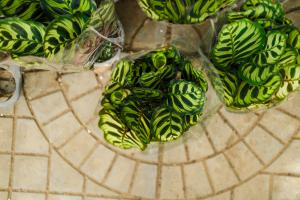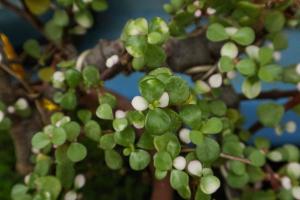How to Prepare Tap Water for Plants
Tap water is essential for maintaining the health and beauty of plants. However, it can contain various chemicals and minerals that can be harmful to plants. In this article, we will discuss how to prepare tap water for plants, so they grow healthy and strong.
Step 1: Let Tap Water Sit for Some Time
When you turn on the faucet, the first water that comes out is cold, and it's usually loaded with chlorine. Chlorine is added to tap water to make it safe for drinking, but it can harm the delicate roots of plants. So, to prepare tap water for plants, fill a bucket with tap water and let it sit for 24 hours. The chlorine will evaporate, and the water will be safe for plants.
Step 2: Filter the Tap Water
Some tap water may contain heavy metals or other toxins that can harm plants. Therefore, it is a good idea to use a filter to remove these impurities from tap water. You can use a standard carbon filter or a reverse osmosis filter to purify tap water for plants. It will not only remove harmful impurities but also make the water clean and safe for plants.
Step 3: Adjust the pH Level of the Water
The pH level of the water is an essential factor that affects plant growth. Most plants thrive in slightly acidic to neutral soil, with a pH level between 6 and 7. If your tap water is too alkaline or acidic, it can harm the plants. You can test the pH level of tap water using a pH meter or a pH testing kit. If the pH level is not ideal, you can adjust it by adding pH balancing chemicals or organic matter like peat moss to the water.
Step 4: Add Nutrients to the Water
Most tap water does not contain the necessary nutrients that plants need to grow. Therefore, it may be necessary to add some nutrients to the water to make it suitable for plants. You can use various fertilizers like nitrogen, phosphorus, and potassium. However, you need to be careful not to add too much fertilizer, as it can harm the plants. You can follow the instructions on the fertilizer package to know the right amount to use.
Step 5: Use the Prepared Water to Water the Plants
Once you have prepared the water for plants, it's time to use it to water the plants. Ensure that you water the plants thoroughly, and the soil is evenly moist. Avoid watering them too much or too little, as it can harm the plants. Make sure that you water the plants at the appropriate time of the day, preferably in the morning or evening.
Conclusion
Preparing tap water for plants is essential to ensure that they grow healthy and strong. By following the above steps, you can ensure that your plants get the right amount of water, nutrients, and pH levels, all of which are crucial for their growth. So, next time you water your plants, make sure that you have prepared the water appropriately.

 how many times do yo...
how many times do yo... how many planted tre...
how many planted tre... how many pine trees ...
how many pine trees ... how many pecan trees...
how many pecan trees... how many plants comp...
how many plants comp... how many plants can ...
how many plants can ... how many plants and ...
how many plants and ... how many pepper plan...
how many pepper plan...































